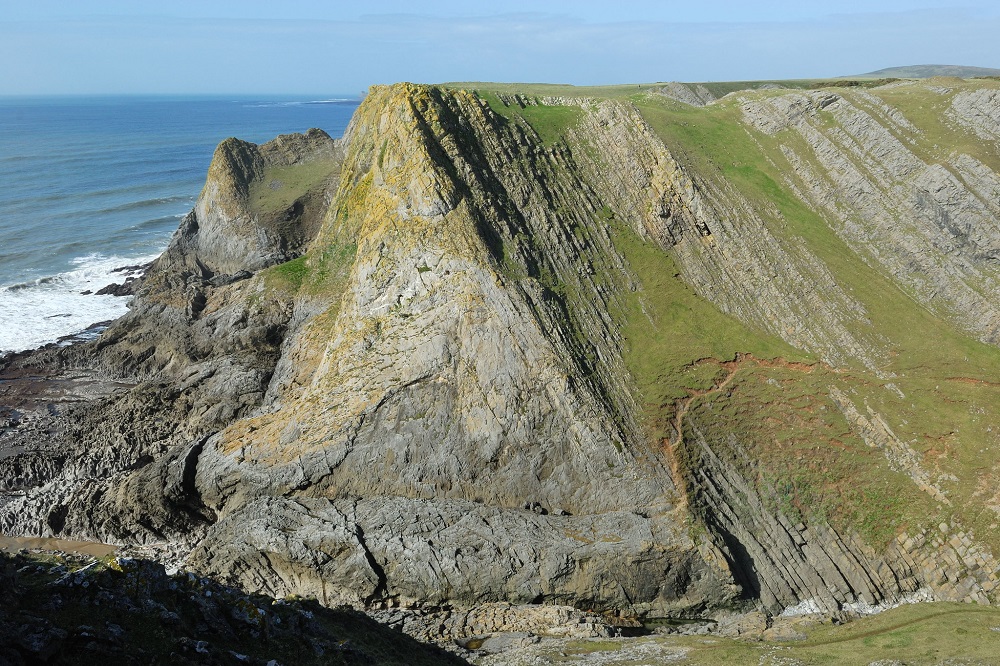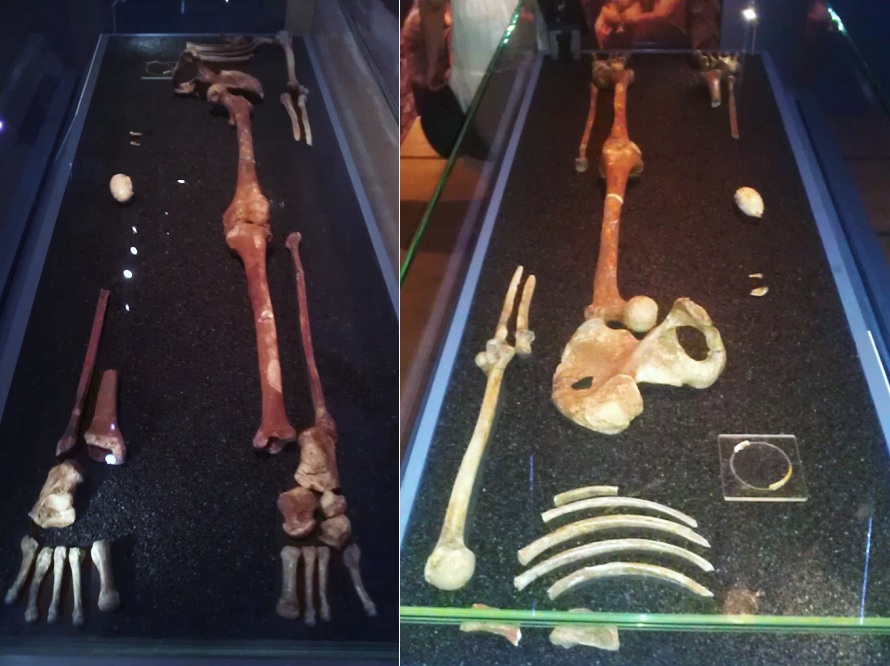Red Lady of Paviland: the story of a 33,000 year-old-skeleton – and the calls for it to return to Wales

Ffion Reynolds Honorary Research Fellow, Cardiff University & Jacqui Mulville Professor in Bioarchaeology, Head of Archaeology and Conservation, Cardiff University
When William Buckland from the University of Oxford grabbed his trusty collecting bag and headed for the Gower peninsula in south Wales in January 1823, he ended up discovering more than he had bargained for.
It is 200 years since the geology professor happened upon one of the oldest human burial sites in western Europe, kicking off an archaeological debate that would last for the next two centuries.
The anniversary of his discovery has once again sparked a debate about whether the human remains should now be repatriated from Oxford to Wales.
In December 1822, Buckland had received a package containing an elephant tusk and skull (which was really a mammoth), along with a basket full of animal bones.
The finds from Paviland cave had been sent by Lady Mary Cole, who lived in Penrice Castle, Gower. The package was so intriguing to Buckland he decided he needed to visit the location in person.
Buckland, an Anglican priest, was operating at an important juncture in the study of human and geological time. He was about to publish his seminal work, Reliquiae Diluvianae, in which religion and science were thrust together as one.
At the time, our account of human history was still largely dictated by the chronology of the Bible. This meant Buckland clung to the idea of a cataclysmic biblical “deluge”.
He was adamant any extinct animals found during his explorations had been washed into the caves by the great flood. This idea became his biggest problem when trying to decipher the depth of time presented at Paviland.
A skeleton story
Paviland, or Goat’s Hole cave, is a limestone cave between Rhossili and Port Eynon on the Gower coast. Today, as at the time of Buckland, the cave is cut off by the tide for most of the year. Buckland visited during winter when tides are at their lowest, meaning he was able to enter and start his excavations immediately.
It wasn’t long before he found an undisturbed burial of human bones and objects, all stained red with ochre. The remains lacked a skull, but on excavation were found to be surrounded by ivory objects (including rods and rings), a clutch of periwinkle shells, and worked flints. Buckland took them back with him to Oxford.
At first he thought the human bones were those of a man, and joked that they belonged to a tax collector who had been murdered by smugglers, for which this coastal area was notorious.
Next, Buckland suggested the remains belonged to a witch, due to the presence of a “blade bone of mutton”. Based on his knowledge of Welsh customs, he imagined this was used as some kind of conjuring tool.
Finally, he argued the skeleton was that of a painted female prostitute, which made the shell beads implements of gambling, while the rings were jewellery made from Roman elephant ivory. This was the story he stuck to, and the one which best fitted his biblical flood theory.
The real issue is that Buckland did not seem to have studied the human bones in detail. Perhaps even if he had, he wanted to suppress what he found. Had he examined the bones properly, he would have noticed the individual wasn’t female but a young male, aged 25–30, who stood about 173cm (5ft 7in) in height.
Buckland’s theories had buckled.

Who was really buried here?
In 2008, radiocarbon-dating techniques conclusively showed these bones belonged to an individual buried around 33,000 years ago.
Paviland, at this time, would have been located at least 60 miles inland, on a cliff above a grassy plain. The landscape would have been teeming with prey such as mammoths, woolly rhinos, giant deer, bison and reindeer.
Buckland was spinning a yarn, however, and wanted to largely ignore the human burial as it did not fit his theories. As a result, Wales lost its opportunity to be at the forefront of Palaeolithic studies, which shifted instead to a European focus.
Between their discovery and the present day, the Paviland bones have been on a journey from tax man, witch, prostitute and Palaeolithic hunter to the more recent suggestions of shaman or spiritual figure. People now visit the cave as a form of pilgrimage. But there have also been calls for the skeleton to take another journey – back to Wales.
Repatriation
Buckland did return some of his finds from Oxford to Wales. The hyena jaw bones are displayed at Swansea Museum, while an ivory staff is stored at St Fagans National Museum of History in Cardiff.
But the remarkable human remains are still on display at the University of Oxford’s Museum of Natural History. Some have called these bones the “Welsh Elgin marbles”.
With the real Elgin marbles now poised to make their way back to Greece from the British Museum, is it time for the human remains from Paviland to come back to Wales?
Repatriation is a complex issue. From the Mold Gold Cape to the Benin Bronzes, returning materials to nations or regions attracts controversy.
The Paviland remains are well cared for where they are, so there’s a question as to whether they should “come home” at all. A further debate is whether they should be returned as an ancestor or an exhibit.
However, the importance of this individual to European and global histories means their return would certainly enhance the Welsh national collection – and shine a spotlight on the unique archaeology and caves of Wales.![]()
This article was first published in The Conversation
Support our Nation today
For the price of a cup of coffee a month you can help us create an independent, not-for-profit, national news service for the people of Wales, by the people of Wales.





As Gwyn Alf said; “When was Wales?” Bringing back the bones of the Red Lady to somewhere that didn’t exist for over 30,000 years of their existence seems childish. Have them where they can best and most usefully be studied.
Give them back including the cape. They’d pinch the skin if your 💩 if they could. I’m sure the English taught the Vikings how to steal, pillage and plunder.
I think that if this was a substantially important find in any other part of the so-called UK there would be a different attitude completely. The fact that an English man took the find away from Cymru to England and it is called childish to ask for it back demonstrates again the complete contempt for any sensitivity we may have for our distant past whether or not any direct linage exits. The simple fact is, it should be in Cymru so the people can see it find a connection and take pride that the earliest human chose to live here.… Read more »
Or perhaps died there while on a hunting trip, at least
That’s normal practice stealing from Wales it’s gone on for hundreds of years and it’s still going on Wake up Wales
The Paviland skeleton is housed in the British Museum because it was claimed at the time we never had a museum. We do now so repatriate what’s rightfully ours! This is our heritage not England’s, which I might add, is a mere blink of an eye compared to ours. It should be returned to Wales. No ifs or buts. Enough is enough. England already holds Welsh antiquities like the Gold Cape of Mold, The Gospels of St’ Chad and the Red Book of Hergest’ etc…, all effectively stolen from Wales , and I say that because calls have been made… Read more »